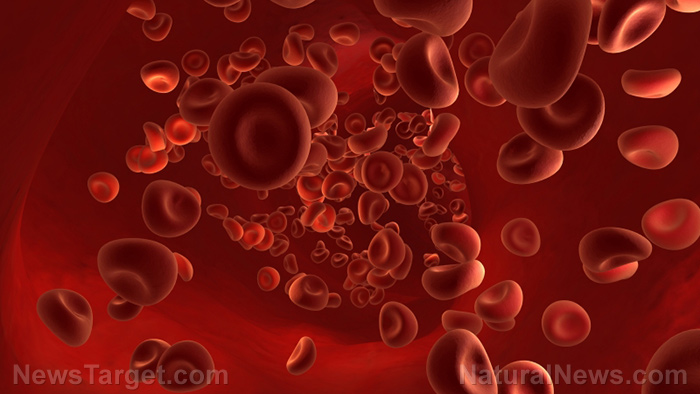
Calcific uremic arteriolopathy – causes, side effects and treatments at NaturalPedia.com
Friday, February 02, 2018 by Ralph Flores
http://www.naturalpedia.com/calcific-uremic-arteriolopathy-causes-side-effects-and-treatments-at-naturalpedia-com.html

Calcific uremic arteriolopathy (CUA), also known as calciphylaxis, is a condition wherein calcium accumulates in the small blood vessels (called vascular calcification) in the fat and skin tissues, causing painful ulcers in the skin to develop. If left untreated, this results in skin necrosis — and in worse conditions, possibly fatal infections.
CUA is usually found in people who suffer from chronic kidney disease — particularly in those with end-stage renal failure. This can also happen to people who are on dialysis or have recently had a kidney transplant. In some cases, this can still occur without kidney disease.

Known risk factors and symptoms of calcific uremic arteriolopathy
How CUA develops into a disease is still unclear. Experts believe that there are a number of potential factors that can affect a person at any given time. Salient indicators for CUA include chronic renal failure, obesity, diabetes mellitus, hypercalcemia (where the calcium level in the blood is abnormally high), hyperphosphatemia (an elevated level of phosphate in the blood), thyroid disorders, or even thrombophilia (an abnormality in the coagulation of blood). While the condition is rare, it is more likely to occur in females.
One of the first symptoms of CUA is a “dull, deep pain” under the skin, followed by the development of dermal plaques which can feel bothersome. The plaques then progress into livedo reticularis which are purplish and irregular dots that appear on the skin. These then develop into lesions that are typically found in the lower extremities.
Complications as a result of CUA could range anywhere from a moderate impediment of normal activity to even death in some cases. Lesions produced by the condition can develop into non-healing ulcers. In chronic cases, it progresses to skin gangrene — tissue necrosis because of a lack of blood supply. If lesions happen inside the body, this results in internal bleeding, infarction (blockages the artery supplying blood to the organ), or organ failure.
Body systems affected by calcific uremic arteriolopathy
CUA primarily affects the body’s circulatory system — in particular, it hits blood vessels found in skin and fat tissues. Moreover, the condition could be an indicator of underlying diseases in the kidney or diabetes.
Food items that may prevent and relieve calcific uremic arteriolopathy
Proper dietary habits certainly help reduce the risk of getting CUA. Choosing the right kinds of food — those that have a high amount of antioxidants, vitamins, and essential nutrients — can make all the difference in steering clear of the disease. Here are some foods that can improve your chances of reducing CUA:
- Apples — These fruits are an excellent source of pectin, a fiber known to reduce cholesterol and glucose levels in the body. The peel is a rich source of antioxidants — in particular, quercetin which protects brain cells — as well as vitamin C.
- Blueberries — Rich in fibers and low in calories, blueberries are highly known to fend off cancer and heart disease.
- Omega-3 fatty acids — These essential nutrients cannot be produced by the body, so consuming fatty fish such as salmon can help get your daily recommended intake and protect yourself against inflammatory bowel disease.
- Kale — This green leafy vegetable contains vitamins A and C, calcium, and other minerals that our body needs. Kale also contains carotenoids and flavonoids, which reduce oxidation of the cells. An essential nutrient found in kale is vitamin K, which is known to inhibit calcification. People who are undergoing dialysis should consult their health service provider first before adding kale to their diets as this may interfere with the procedure.
- Strawberries — This red fruit is packed with vitamins, antioxidants, and fiber to aid in digestive health. Moreover, it’s a good source of magnesium, which helps regulate calcium levels in the body.
However, if a person already has a chronic kidney condition, his dietary habits will subsist salt and sodium to help manage the disease. Cutting back on salt and sodium by choosing fresh fruits and vegetables over packaged meals and eating small portions of protein help contribute to improved kidney health in the long run.
Treating and managing calcific uremic arteriolopathy
Treating CUA is a multifaceted approach that considers various forms of intervention, but an important element of this is preventing the aggravation of symptoms. This means reducing the amount of calcium intake in the body, as well as introducing initial medication like sodium thiosulfate.
At first, healthcare professionals will consider more conservative options such as diet changes, supplements that reduce calcium, and low-calcium bath dialysis. Managing pain will also be discussed with the patient.
In cases where lesions have already formed, surgical options will be used to address skin necrosis and prevent wound infection. However, these are not always effective and may show no difference in survival.
Where to learn more
- The Calcium Wars: Magnesium deficiency causes heart disease
- Nutrients.news
- Herbs.news
- Medicine.news
- DangerousMedicine.com
Summary
Calcific uremic arteriolopathy is a condition wherein calcium forms in blood vessels, creating painful lesions that appear on the skin. This is usually an indicator of chronic renal failure, but there can be cases where this may happen without any kidney disease. While treatment options only offer symptomatic management, proper diet and food choices may help a person prevent the disease.
Sources include
Tagged Under: Tags: Calcific uremic arteriolopathy





